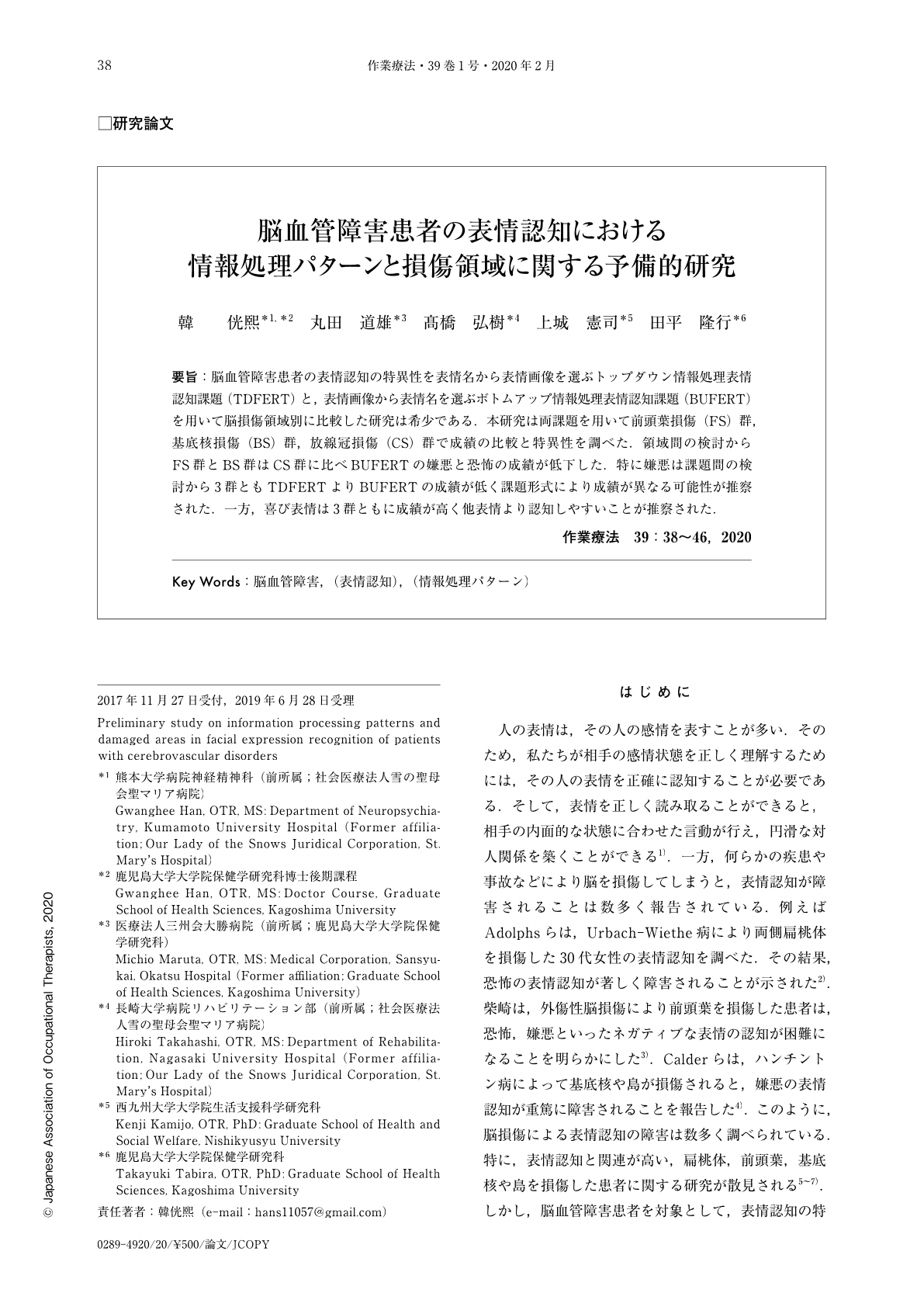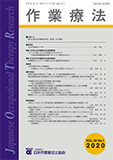Japanese
English
- 販売していません
- Abstract 文献概要
- 1ページ目 Look Inside
- 参考文献 Reference
要旨:脳血管障害患者の表情認知の特異性を表情名から表情画像を選ぶトップダウン情報処理表情認知課題(TDFERT)と,表情画像から表情名を選ぶボトムアップ情報処理表情認知課題(BUFERT)を用いて脳損傷領域別に比較した研究は希少である.本研究は両課題を用いて前頭葉損傷(FS)群,基底核損傷(BS)群,放線冠損傷(CS)群で成績の比較と特異性を調べた.領域間の検討からFS群とBS群はCS群に比べBUFERTの嫌悪と恐怖の成績が低下した.特に嫌悪は課題間の検討から3群ともTDFERTよりBUFERTの成績が低く課題形式により成績が異なる可能性が推察された.一方,喜び表情は3群ともに成績が高く他表情より認知しやすいことが推察された.
There are few studies comparing the specificity of facial expression recognition in patients with cerebrovascular disease by brain damaged area. There is also no research comparing the top-down and the bottom-up information processing patterns in facial expression recognition of cerebrovascular disorder patients. This study classified the patients as follows: Frontal lobe Stroke (FS) group, Basal ganglia Stroke (BS) group, and Corona radiata Stroke (CS) group. Then, the Top-Down information processing Facial Expression Recognition Task (TDFERT) and the Bottom-Up information processing Facial Expression Recognition Task (BUFERT) were performed on the 3 groups, and the results of the facial expression recognition tasks were compared. Subsequently, the specificity of facial expression cognition in brain-damaged areas was investigated. As a result, the disgust and fear performance in the BUFERT was lower in the FS group and the BS group than in the CS group. The performance on the BUFERT was lower than the TDFERT in all three groups with disgust, indicating that the performance differs depending on the form of facial expression recognition task. On the other hand, happiness was high in both groups, implying that it is a more recognizable expression than other facial expressions.

Copyright © 2020, Japanese Association of Occupational Therapists. All rights reserved.


